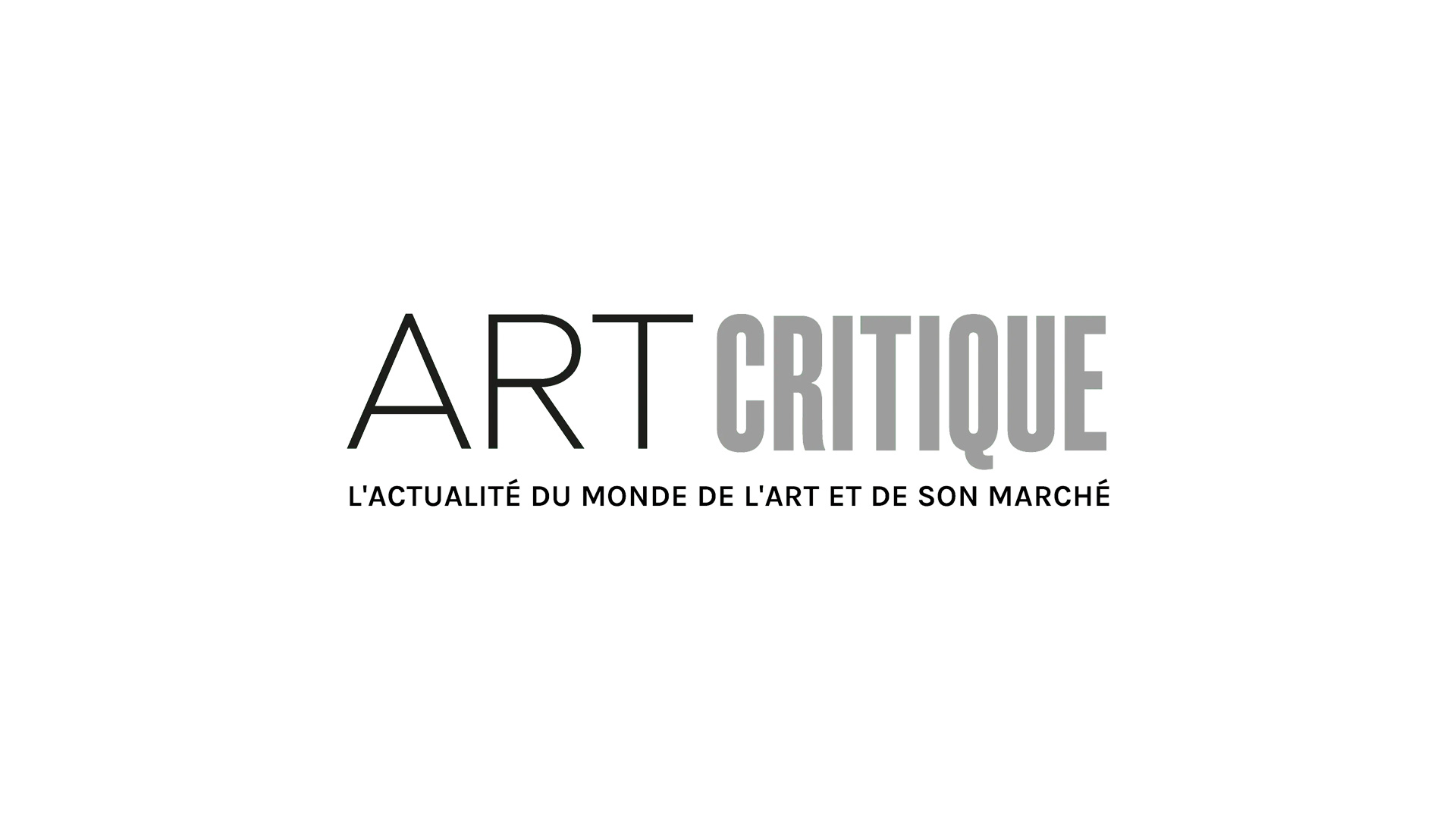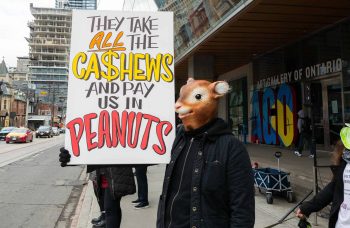American painter Don Nice, often described as a “pop-realist” whose unique relationship with the American landscape and iconography defied categories, has died at age 86. He is perhaps best known for his early works, which focused on single, isolated objects—a bunch of grapes, candy bars, sneakers, buffalo—against a plain background; in later works, he broke free of the traditional rectangular canvas, combining his banal, iconic imagery with sublime American landscapes to bring a unique, contemporary vision to the tradition.
Don Nice grew up in the San Joaquin Valley, California, where his father worked for a fruit company, and his grandfather, a doctor and gold miner, regaled him with tales of cowhands and ’49ers, stagecoaches and train robbers. His grandfather and aunt, both amateur painters, also nurtured his interest in art, and his father built him a small studio in their backyard. He attended the University of Southern California on a football scholarship, where he earned a teaching certificate, but where there was no art department, so he also signed up for correspondence courses.
After graduation, he taught high school before joining the Army and spent two years at Fort Ord, California, where he painted a 24-foot mural of potato peelers in the mess hall. After leaving the Army in 1957, he spent several years in Europe, at one point ending up in Salzburg to study watercolor with Oskar Kokoschka, then going to Paris, where he was had an epiphany when he discovered the work of Willem de Kooning and Jackson Pollock in the groundbreaking MoMA exhibit “The New American Painting,” then touring Europe. Upon his return to the United States, he taught painting at the Minneapolis School of Art before being accepted into the prestigious graduate program at Yale, where he studied painting with Alex Katz alongside fellow students Chuck Close, Nancy Graves, and Richard Serra and received his master’s degree in 1964.
Nice settled in New York and spent the next few years exploring abstract expressionism, but remained instinctively attracted to depicting “things.” In 1963, he began painting larger-than-life American motifs based on labels and ads, filling the canvas and emphasizing the flatness of the picture plane. Eliminating the background, painting directly on raw, unprimed canvas, he also painted isolated objects such as gigantic onions and huge beets. Immediate and accessible, depicted against the flat, neutral background, they would take on an almost heraldic presence. He wanted, he said, “to create a new sensibility, to engage people, to show them how extraordinary the ordinary truly was.” Some grapes purchased at the market led to an epiphany; painting them over and over again, larger and larger still, he ended up with a version measuring 9 feet tall, allowing him to shift from the specific to the universal.
In 1969, he left New York City for the countryside along the Hudson River, becoming profoundly connected with nature and firmly entrenched in the American landscape tradition of the Hudson River School, and the transcendent love of nature conveyed in the Luminist works of Frederic Edwin Church, Albert Bierstadt or Thomas Cole, an expression of the American “sublime.” He also undertook long voyages on the river, at one point spending spent two weeks following the Hudson from its source in the Adirondack Mountains to New York Harbor, along the way producing nearly 100 small paintings, painted made from a boat or raft.
Nice also explored alternatives to traditional canvas formats, repudiating the rectangular confines of a typical canvas. Many of his “totems,” stacks of emblematic images, he borrowed the convention of predellas from Renaissance altarpieces. In his works, religious icons became Warholian, familiar and nostalgic packaged foods: Ritz crackers, Coca-cola bottles, Planters Peanuts or Hershey bars that explore the homogeneity of mass-produced culture, which he would juxtapose with iconic American motifs (sneakers, popcorn, sunglasses) and a diverse vocabulary of flora and fauna (a bear, squirrel or bird). In later years, he experimented with sculptural, multipart paintings, often incorporating large cutouts in aluminum. Despite their faithful attachment to realism, these poetic works escape easy labels, blending natural and synthetic, abstraction and realism, painting, sculpture and motion.





